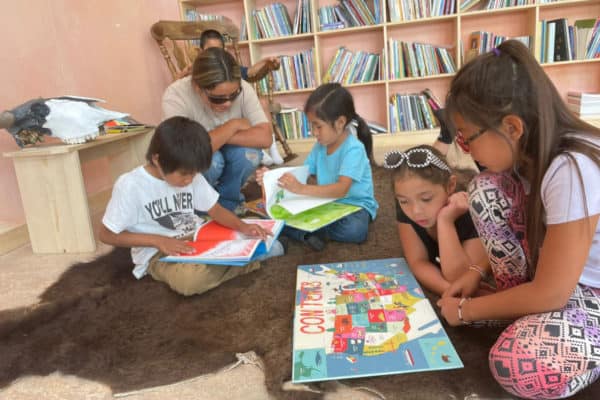What is Waldorf Education? And How Does it Work?
Waldorf Education is a worldwide independent school movement represented with over 1,100 schools (elementary and high school), 2,000 early childhood programs, and 530 centers for special education.
Started over 100 years ago, Waldorf Education is now in over 80 countries, and is recognized as the forerunner of many contemporary learning and teaching methods used today. These methods include theme-based education, schedule blocks, and teaching to multiple learning styles. They also include “looping” (the practice of moving groups of children up from one grade to the next with the same teacher also known as “multi-year grouping”), and “character education” (helping children develop the virtues or moral habits to live good lives and become contributing members of their communities).
However, the healing power of Waldorf Education rests upon its foundation in a developmentally appropriate curriculum (also known as an age-appropriate curriculum) and a three-fold learning process that engages “head, heart, and hands” (or thinking, feeling, and doing). It is upon these tenets that Waldorf teachers nurture and engage each child through an integrated curriculum of academics, arts, and practical skills. And it is why Waldorf schools are recognized worldwide for cultivating the following qualities in their students:
- Solid Academic Skills
- Strong Cognitive Ability
- Curiosity, Imagination, Creativity
- Wholesome Self-Confidence
- Healthy Social Relationships
- An Awe-Inspired Connection to Nature
- A Life-Long Love of Learning

Waldorf Education works – a claim that is supported with an overwhelming body of research from the past twenty years, primarily in neuroscience, that shows how Waldorf pedagogy works to support the healthy development and optimal functioning of the brain. (SOURCE: Why Waldorf Works: From a Neuroscientific Perspective by Dr. Regalena Melrose)
Waldorf Education was started in Germany in 1919 by Dr. Rudolf Steiner (1861-1925) – an Austrian philosopher, teacher, social reformer, artist, and visionary. Steiner is also the founder of “Anthroposophy” – a movement that teaches an enlarged and deepened concept of what it means to be human. His anthroposophical insights, which underlie Waldorf pedagogy, have also inspired numerous initiatives related to Camphill communities, biodynamic agriculture, social finance, anthroposophical medicine, social arts, and more.
Anthroposophy itself is not taught in Waldorf schools. However, many Waldorf teachers, including those at Lakota Waldorf School, use Steiner’s insights into child development to create a nurturing environment that educations the entire child: head, hands, and heart.
Waldorf Education Resources
Videos, Websites, and PDF’s (Listed Alphabetically)
- AWSNA (Association of Waldorf Schools of North America)
- AWSNA Principles for Waldorf Schools (Downable PDF)
- “Learn to Change the World” (A Two-Part Film that takes an in-depth look at Waldorf Education)
- rudolfsteiner.org (A website of the Anthroposophical Society of North American that provides extensive information about Steiner’s core ideas and the initiatives inspired by him.)
- “Seeding the Future” (A Short Video on the Principles of Waldorf Education)
- Steiner Books (An international publisher of the works by and about Rudolf Steiner; previously the Anthroposophic Press, Inc.)
- The Online Waldorf Library (A Project of the Research Institute for Waldorf Education)
- Waldorf Publications (An online source for teachers and families; previously ASWNA Books.)
- Waldorf Resources (A Website of The International Forum for Steiner/Waldorf Education)
- Waldorf Today Newsletter (Sign up to receive news about Waldorf Education from around the world.)
- WECAN (Waldorf Early Childhood Association of North America)
Notable Waldorf Alumni
Although fame is not the only measure of success, this partial list of notable Waldorf Alumni from around the world provides a picture of the many ways that Waldorf education prepares students to pursue their passion.
- Benjamin Agosto, American Ice Dancer and 2006 Olympic Silver Medalist
- Saul Bellow, Writer and Winner of the Nobel Prize in Literature
- Jennifer Aniston, American Actress, Entrepreneur
- Sandra Bullock, American-German Actress and Philanthropist
- Kenneth Chenault, American Chairman and CEO of American Express
- Christopher Nash Elliott, American Actor, Comedian, and Writer
- Julianna Margulies, American Actress and Producer
- Victor Saul Navasky, American Journalist, Editor and Academic
- Boris Erasmus Palmer, German Politician and Green Party Member
- Jens Stoltenberg, Former Norwegian Prime Minister
- Thomas C. Sudhof, American-German Biochemist and Co-Recipient of the 2013 Nobel Prize in Physiology or Medicine
- Ellie Winslow, American Novelist and Nonfiction Writer
Also, here is a partial list of celebrities who have chosen to send their children to a Walschool: Mikhail Baryshnikov, Clint Eastwood, Harrison Ford, Art Garfunkel, Harvey Keitel, Jessica Lange, George Lucas, Paul Newman, Rosie O’Donnell, Carly Simon, James Taylor, and Nina Rothschild Utne.
